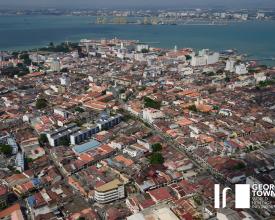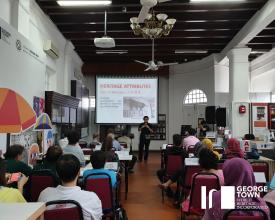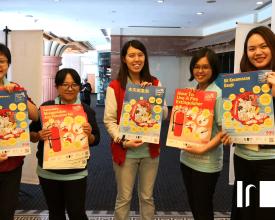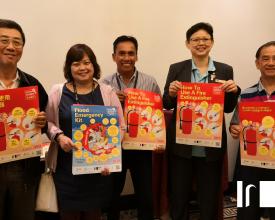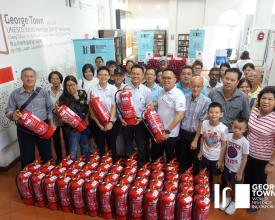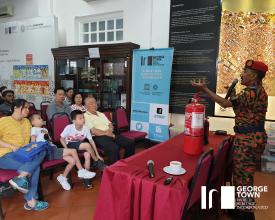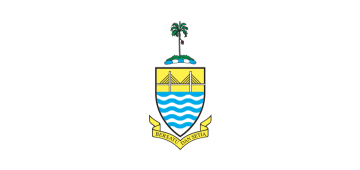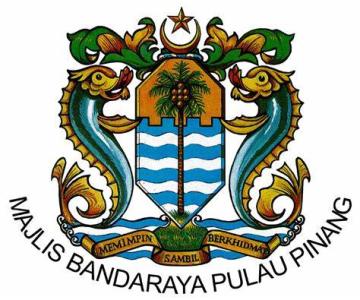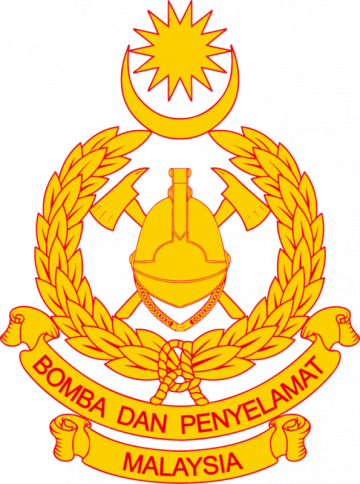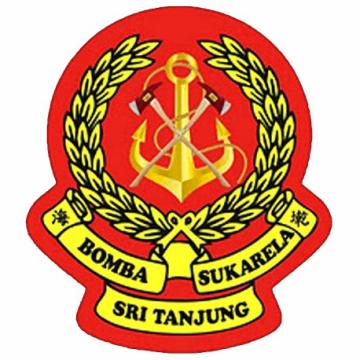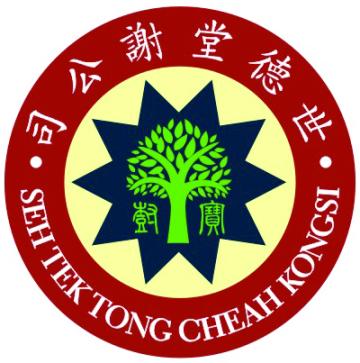
Gestion communautaire des risques de catastrophes pour la ville de George Town, classée au patrimoine mondial de l'humanité, en Malaisie

En 2008, la ville patrimoniale de George Town (Malaisie) a été inscrite sur la Liste du patrimoine mondial en tant que partie du site de Melaka et George Town, villes historiques du détroit de Malacca en 2008 sur la base des critères (ii), (iii) et (iv). Cette désignation a mis en évidence les influences uniques des cultures malaise, chinoise, indienne et européenne dans les deux villes, qui se reflètent également dans le tissu urbain historique, les communautés multiculturelles et leurs pratiques, rituels et vies quotidiennes spécifiques, et ont créé un style architectural unique d'un paysage urbain exceptionnel en Asie de l'Est et du Sud. George Town World Heritage Incorporated (GTWHI), en tant que gestionnaire du site, a travaillé avec les communautés locales et d'autres parties prenantes au développement d'une gestion communautaire des risques de catastrophes pour George Town. Parmi les approches adoptées, citons l'autonomisation des communautés locales, la mise en œuvre de mesures incitatives, ainsi qu'une communication permanente avec les agences et les autorités chargées de la prévention et de la gestion des risques de catastrophes.
Contexte
Défis à relever
La gestion du patrimoine est toujours un défi en termes d'équilibre entre les exigences de conservation, les besoins des communautés locales et la mise en place d'un avenir durable et viable pour le site. Cette solution présente les approches mises en œuvre pour faciliter l'accès du public au patrimoine, notamment en ce qui concerne la prévention et la gestion des risques de catastrophes. En se concentrant sur les incendies et les inondations comme principaux risques, GTWHI travaille avec diverses parties prenantes (y compris les propriétaires, les locataires et les utilisateurs des bâtiments) pour améliorer, prévenir et atténuer les pertes en cas de catastrophe et d'urgence. En termes de conservation, les bâtiments historiques de George Town sont construits en bois, briques, chaux et pierres. Ces bâtiments sont construits les uns à côté des autres, dans des rues étroites, et sont donc très vulnérables aux incendies.
Emplacement
Traiter
Résumé du processus
Dans tout programme patrimonial, l'adhésion réelle des principales parties prenantes est le facteur le plus important pour assurer son succès et sa poursuite. Pour planifier et mettre en œuvre efficacement ces efforts de gestion et de prévention des risques de catastrophes, le GTWHI a utilisé son vaste réseau social avec les agences locales et les communautés locales pour les inviter à contribuer et à participer à la mise en œuvre de ces plans d'action. La mise en œuvre de ce programme a nécessité l'établissement d'une collaboration de confiance avec les organismes d'urgence locaux, en particulier le service d'incendie et de secours de Malaisie, ainsi qu'avec les communautés locales. Sur la base de cette relation de collaboration, et grâce à des consultations et des communications avec les parties prenantes lors de la formation à la réduction des risques de catastrophes à base communautaire [BB1], GTWHI a été en mesure de concevoir des affiches [BB2] avec les contributions des communautés locales, comme établi dans la préparation et la réponse aux incendies à base communautaire [BB3].
Blocs de construction
Formation aux capacités communautaires
Des ateliers communautaires et des campagnes de sensibilisation à la réduction et à la gestion des risques de catastrophes ont été organisés par le GTWHI à l'intention des communautés locales. Des représentants des communautés locales (gardiens de bâtiments patrimoniaux ou résidents) ont participé aux formations pour identifier les risques, discuter des mesures préventives et élaborer des actions d'urgence. Ces sessions ont permis aux communautés locales de mieux comprendre la préparation aux catastrophes, d'identifier les risques, d'évaluer les vulnérabilités et les facteurs possibles, ainsi que de réduire les impacts potentiels des catastrophes sur le site.
Les ateliers étaient structurés comme suit :
- Introduction des concepts clés à l'aide d'exemples, cartographie du site et jeux d'imagination.
- Les participants ont échangé des scénarios de catastrophes et proposé des mesures d'atténuation pour les personnes et le patrimoine, en élaborant des stratégies de réponse aux situations d'urgence.
- Les participants ont détaillé l'analyse des risques et identifié les acteurs possibles et leurs rôles avant, pendant et après une catastrophe
- Les participants ont présenté leurs études de cas avec un plan d'opération standard pour l'avant, le pendant et l'après-catastrophe.
- Les participants ont présenté leurs études de cas lors de l'atelier de partage d'expériences sur la stratégie de RRC pour les villes du patrimoine en Asie du Sud-Est, dans le Pacifique et en Afrique.
Facteurs favorables
GTWHI a organisé plusieurs ateliers de 2 heures sur une période de 7 mois, avec un renforcement progressif des capacités pour introduire les concepts de RRC auprès des communautés locales.
Leçon apprise
Le renforcement des capacités et la sensibilisation sont essentiels à la mise en œuvre d'une formation communautaire durable. En particulier, l'implication continue et significative des communautés locales dans la prévention, la planification et la gestion des risques de catastrophes est essentielle pour les résultats du projet.
Ainsi, toutes les activités de renforcement des capacités sont menées dans une langue avec laquelle la communauté locale est le plus à l'aise, et les sessions sont organisées au moment où les participants sont disponibles (en évitant les périodes de travail chargées ou les périodes de la journée).
Le GTWHI s'est éloigné des styles de formation académiques et compacts axés sur le jargon et a organisé des ateliers de plusieurs jours qui utilisent des termes et des exemples réalistes et réceptifs. GTWHI a fourni une assistance technique aux participants avant, pendant et après leurs présentations, et a offert aux participants des opportunités et des plateformes pour partager leurs stratégies avec l'UNESCO ainsi qu'avec des agences internationales et nationales (par exemple le service d'incendie et de secours de Malaisie).
Posters d'information sur la réduction et la gestion des risques de catastrophes
Les affiches informatives sont l'un des outils de réduction des risques de catastrophes développés par le GTWHI pour sensibiliser aux mesures d'atténuation des catastrophes et à la préparation aux interventions d'urgence. Les affiches présentent les incendies et les inondations comme des risques majeurs, avec des informations sur les risques, les vulnérabilités, la prévention et les stratégies de réduction. Ces affiches ont été produites en quatre langues locales - anglais, malais, chinois et tamoul - pour s'adresser aux communautés multiculturelles de Malaisie.
Facteurs favorables
Pour étendre la campagne de sensibilisation à l'intérieur et à l'extérieur du site du patrimoine mondial, le GTWHI a imprimé des affiches en quatre langues, qui ont été très bien accueillies par le public. La conception et le contenu ont été basés sur les commentaires reçus de la communauté au cours de l'atelier de formation. La sensibilisation par le biais d'affiches est une approche plus pratique pour les communautés locales, car ces supports sont visuellement clairs et plus faciles à comprendre.
Leçon apprise
Les affiches d'information sur la réduction et la gestion des risques de catastrophes sensibilisent et préparent la population aux risques de catastrophes, en particulier les résidents, les propriétaires de bâtiments et les utilisateurs quotidiens de la ville. La diffusion d'une boîte à outils infographique facile à utiliser et visuellement accessible est une approche pratique pour aborder les problèmes sur place. Il est également essentiel et nécessaire d'impliquer la communauté locale dans l'élaboration du contenu (en particulier au cours de la phase de développement), car cela confère à ces affiches une force conviviale et axée sur le lieu.
Ressources
Stratégie communautaire de préparation et d'intervention en cas d'incendie
Avec plus de 5 300 bâtiments dans la ville du patrimoine de George Town, il est important de préparer le site de manière proactive afin de réduire les risques d'incendie. Le GTWHI s'efforce de fournir au moins un détecteur de fumée et un extincteur pour chaque bâtiment du site du patrimoine mondial. Une session de formation à la sécurité incendie a également été organisée dans le cadre de ce programme, en collaboration avec le service d'incendie et de secours de Malaisie. Les communautés participantes ont été formées aux mesures pratiques de prévention et d'atténuation des risques d'incendie (installation d'un détecteur de fumée, utilisation d'un extincteur, etc.)
Depuis juillet 2020, la maintenance des extincteurs a été effectuée pour la première phase des intervenants communautaires en cas d'incendie. L'équipe de GTWHI a visité les 50 participants pour vérifier l'état de leurs extincteurs, renouveler le certificat du service d'incendie et de secours qui est affiché sur l'extincteur, et comprendre les problèmes et les défis auxquels ils sont confrontés pendant la période difficile de la pandémie de COVID-19.
Facteurs favorables
Le partenariat et l'étroite collaboration entre le service d'incendie et de secours de Malaisie et GTWHI ont permis de concevoir et de mettre en œuvre cette activité de formation en tenant compte des besoins de la communauté.
Leçon apprise
L'objectif de la stratégie communautaire de préparation et de réponse aux incendies est de sensibiliser le public aux mesures pragmatiques à prendre pour améliorer la sécurité du patrimoine culturel contre les incendies. GTWHI a collaboré avec le service d'incendie et de secours de Malaisie pour organiser ces formations pour les communautés locales sur l'intervention efficace en cas d'incendie, la prévention des incendies et l'approche correcte de l'utilisation des extincteurs, entre autres. Outre l'apprentissage d'informations relatives aux urgences incendie, les communautés locales ont également eu l'occasion d'instaurer un climat de confiance et de compréhension avec le service local d'incendie et de secours de Malaisie et GTWHI.
Impacts
Cette approche favorise l'amélioration de la gestion communautaire des risques de catastrophes par le biais d'ateliers, de campagnes de sensibilisation, de formations pratiques, de mesures d'incitation, etc. Ces activités ont permis d'améliorer les mesures de protection contre les incendies sur le site et de renforcer la résilience des communautés en cas d'urgence. En particulier, les communautés locales sont formées pour savoir comment agir et réagir efficacement en cas de catastrophes telles que les incendies et les inondations. Grâce à diverses formations et à la mise en place de plateformes de communication, le dialogue, la confiance et la compréhension entre les propriétaires et les gardiens de bâtiments patrimoniaux et les services de secours se sont considérablement améliorés. Cette préparation est importante car toutes les parties prenantes travaillent en collaboration pour réduire les risques et sont en mesure d'agir rapidement en cas de catastrophe ou d'urgence.
Bénéficiaires
Les utilisateurs diurnes (résidents, travailleurs, propriétaires de bâtiments patrimoniaux, gardiens, utilisateurs et visiteurs) et les utilisateurs nocturnes (résidents, gardiens et visiteurs).
Objectifs de développement durable
Histoire
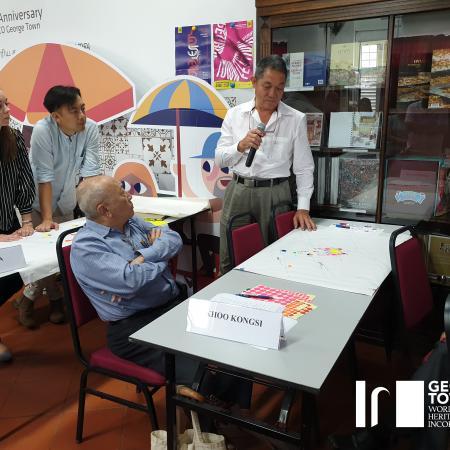
Conformément aux stratégies de réduction et de gestion des risques de catastrophes pour la ville patrimoniale de George Town, GTWHI promeut la connaissance de la réduction et de la gestion des risques de catastrophes par le biais d'ateliers et de campagnes de sensibilisation avec et pour les communautés locales.
Le témoignage de M. Khoo Teng Khoon (secrétaire, administrateur de Boon San Tong Khoo Kongsi) illustre parfaitement le pouvoir de l'adhésion de la communauté. M. Khoo est l'un des gardiens du bâtiment de catégorie I de l'Association du clan Boon San Tong Khoo Kongsi. Il est l'un des participants actifs exposés au concept et à l'importance de la réduction des risques de catastrophes pour le patrimoine culturel, et a reçu des formations pour identifier les dangers, la vulnérabilité et les facteurs possibles de catastrophes, ce qui a permis de développer un plan de gestion des risques de catastrophes pour Boon San Tong Khoo Kongsi.
À la fin de la série d'ateliers, M. Khoo a été invité à l'atelier de partage d'expériences sur la stratégie de réduction des risques de catastrophes dans les villes du patrimoine en Asie du Sud-Est, dans le Pacifique et en Afrique, et a partagé le plan de gestion des catastrophes qu'il avait préparé pour Boon San Tong Khoo Kongsi.
Au cours de sa présentation, M. Khoo a déclaré qu'il était époustouflé par les risques et les possibilités d'atténuation qu'il pouvait mettre en œuvre pour mieux protéger le temple ancestral de Boon San Tong Khoo Kongsi et l'héritage transmis par ses ancêtres. M. Khoo s'est également engagé à partager les connaissances sur la réduction des risques de catastrophe pour le patrimoine culturel avec ses administrateurs afin de s'assurer que leurs biens puissent être protégés et transmis à la prochaine génération.
L'histoire de M. Khoo est l'une des nombreuses histoires qui ont encouragé le GTWHI à poursuivre sur la voie d'une participation significative de la communauté, ce qui conduira finalement à une approche durable et meilleure de la réduction des risques de catastrophe et de la gestion du site.

